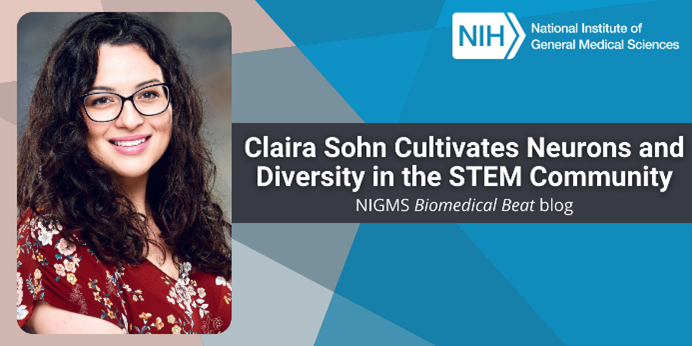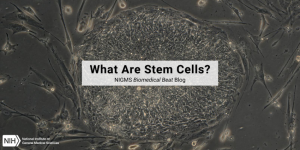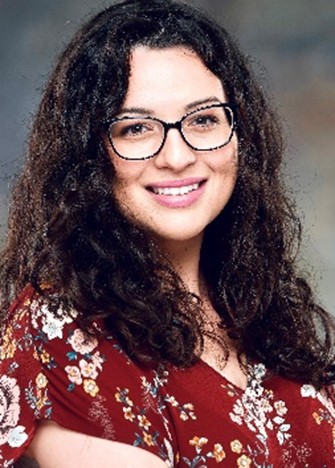
Claira Sohn credits her grandfather with sparking her interest in science. Although he never studied science at a 4-year university due to financial limitations, he took many community college classes and worked in chemistry labs developing products such as hair dyes and dissolvable stitches. “Every morning, my grandfather would take me to school, and we’d stop to get orange juice and a cookie and talk about science. When I was in elementary school, he bought me a book about quantum mechanics written for kids,” she says. “He inspired me to ask questions and encouraged me to go to college.”
Claira enrolled at Northern Arizona University in Flagstaff after graduating high school. She majored in biomedical sciences and planned to become a medical doctor until her microbiology professor talked to her about the possibility of a research career. “That was an epiphany for me, because while I knew that there was research going on in the world, I didn’t realize there could be a place for me there,” Claira says. During her junior year, she joined the lab of Naomi Lee, Ph.D., where she first experienced what it felt like to be a researcher.
Dr. Lee encouraged Claira to get involved in the Society for Advancement of Chicanos/Hispanics and Native Americans in Science (SACNAS), so she went to their annual conference in 2019. “Going there was mind-blowing because I got to see people who looked like me and were also first-generation college students succeeding in research. It reinforced for me that I did belong in research, and after the conference, I started looking more seriously into Ph.D. programs,” she says.
The Power of Diversity in STEM
Claira ultimately chose to pursue her Ph.D. in integrated biomedical sciences at the University of Texas Health Science Center at San Antonio (UTHSA). After she accepted her admission offer, the director of the NIGMS-supported Initiative for Maximizing Student Development
(IMSD) program there reached out to her. The IMSD program’s aims of building a strong community of students from diverse backgrounds and guiding them through earning doctoral degrees resonated with Claira. She also appreciated how the program brings in scientists from a range of fields to share their career paths and how it provides other opportunities for professional growth and networking.
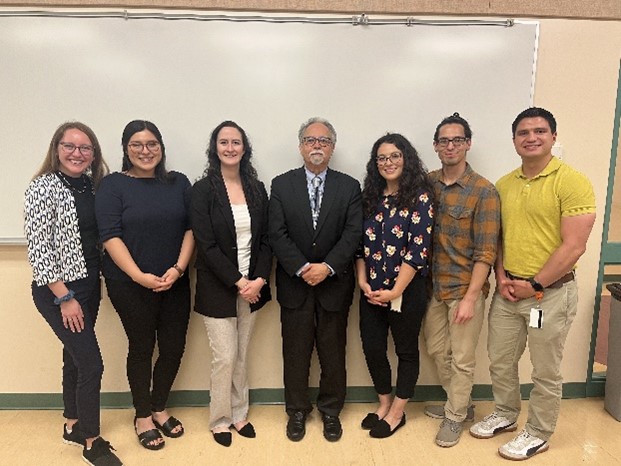
Claira joined the IMSD program and, through it and the SACNAS chapter at UTHSA, has connected with other students from diverse backgrounds. As a third-year student during the 2022-2023 academic year, she became president of the SACNAS chapter and focused on growing the organization and fostering a sense of community for Hispanic and Native American graduate students. Claira planned monthly meetup events between graduate students and local scientists, coordinated a university-wide panel discussion on diversity in STEM, and organized participation in local elementary schools’ career days. “The career days are really exciting because we get to see kids light up when they realize that people who come from the same backgrounds that they do are scientists, and they can be too,” she says.
Present and Future in the Lab
In addition to investing time in the student community, Claira is dedicated to her research. She works in the lab of Bess Frost, Ph.D., studying how abnormal forms of a protein called tau that are associated with Alzheimer’s disease affect nerve cells’ nuclei. Using cell cultures, Claira has shown that abnormal tau proteins can decrease the tension of nuclei, making them resemble pitted coffee beans instead of their usual smooth shape. Such changes to nuclei’s structure can have consequences like altered expression of the genes stored inside and increased activation of transposable elements—pieces of DNA that can move to different places in the genome. These consequences may contribute to disease progression.
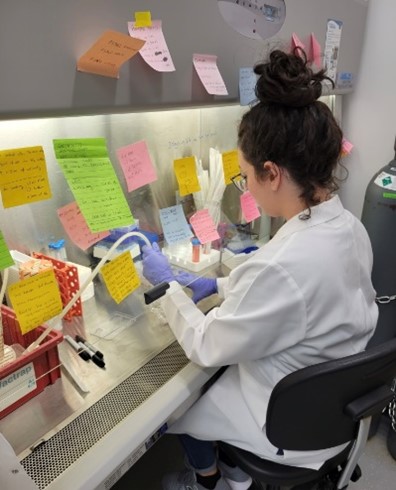
Throughout her time in Dr. Frost’s lab, Claira has mentored several undergraduate students. “Mentoring has been my favorite aspect of graduate school,” she says. “Doing research is awesome, but getting to see undergrad summer students complete their first Western blot or do well on their first PCR is even more exciting to me than my experimental results.”
Claira hopes to pursue a career in academia so that mentoring students can be a central part of her work and she can do more to increase diversity in STEM. She advises young people interested in becoming scientists: “Don’t be afraid of a path that doesn’t seem clear in the moment. When I was a high school student, I was so afraid to do something that wouldn’t give me an immediate result because I wanted to do well for my family. But giving into that fear would have really limited me. Take every opportunity that you can, and find what you’re passionate about.”
Claira received funding from the IMSD program through grant R25GM095480 (now T32GM148752) during her first year of graduate school and continues to be involved in the program. Her research is currently supported by the National Institute on Aging through grant T32AG021890.


